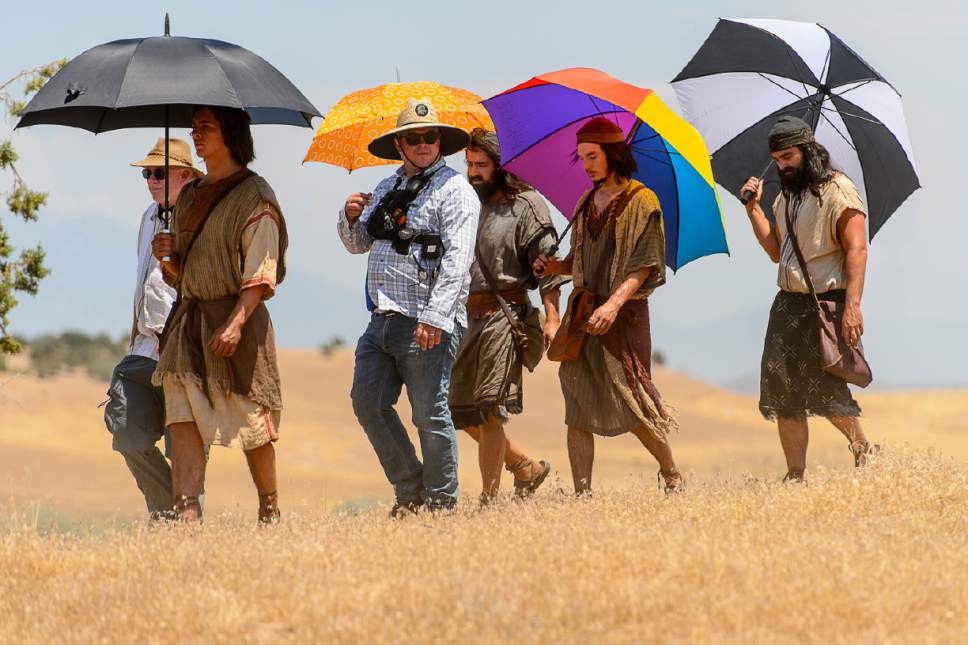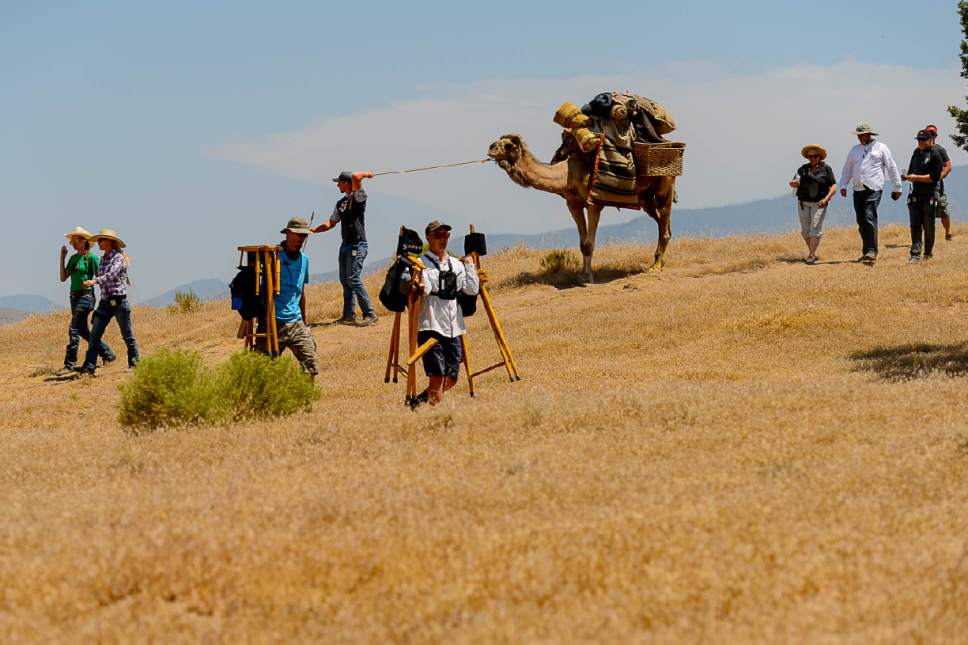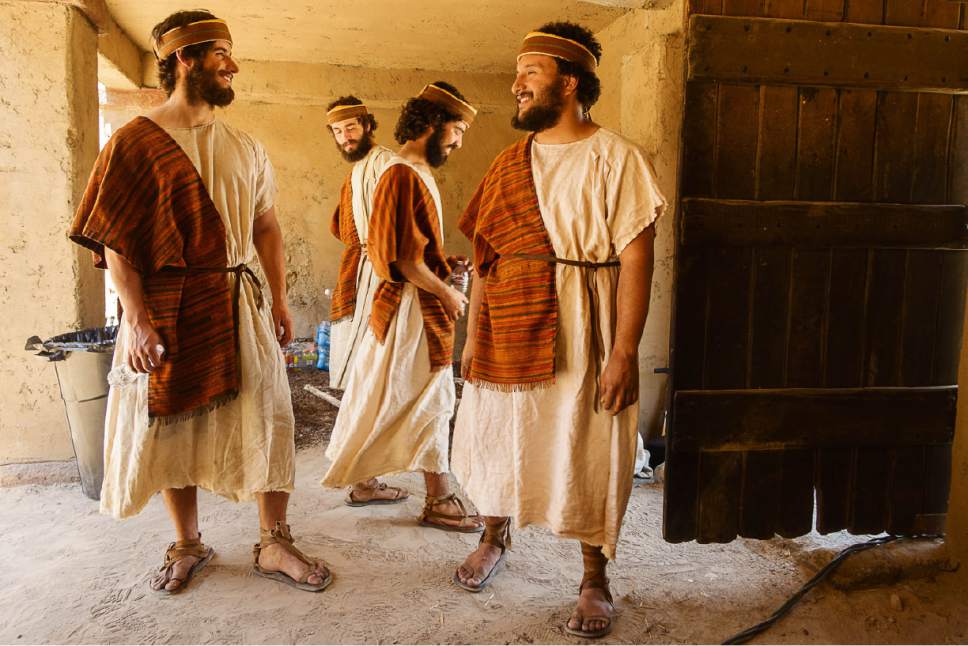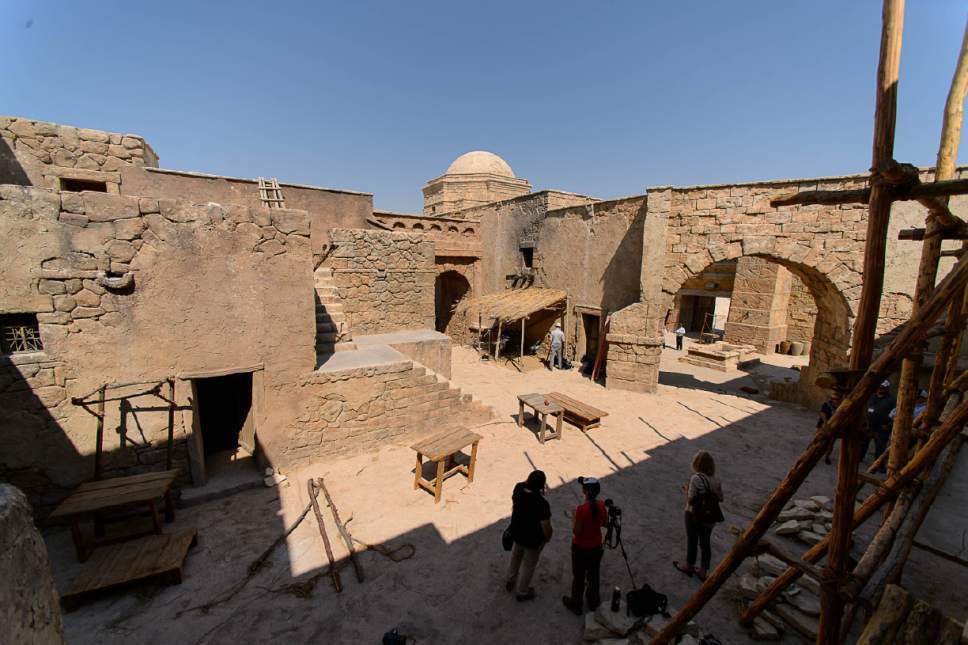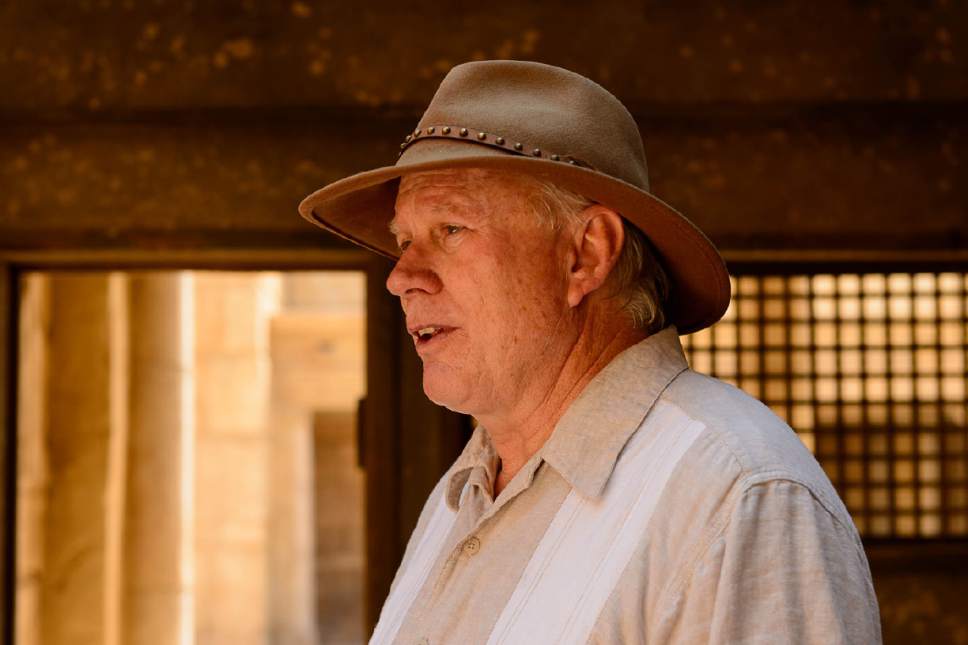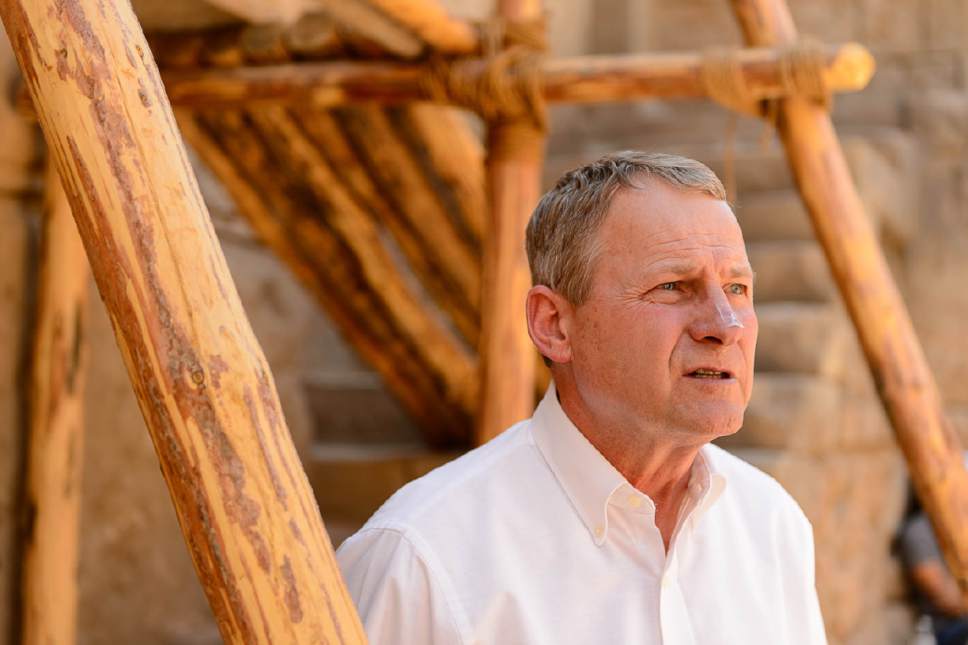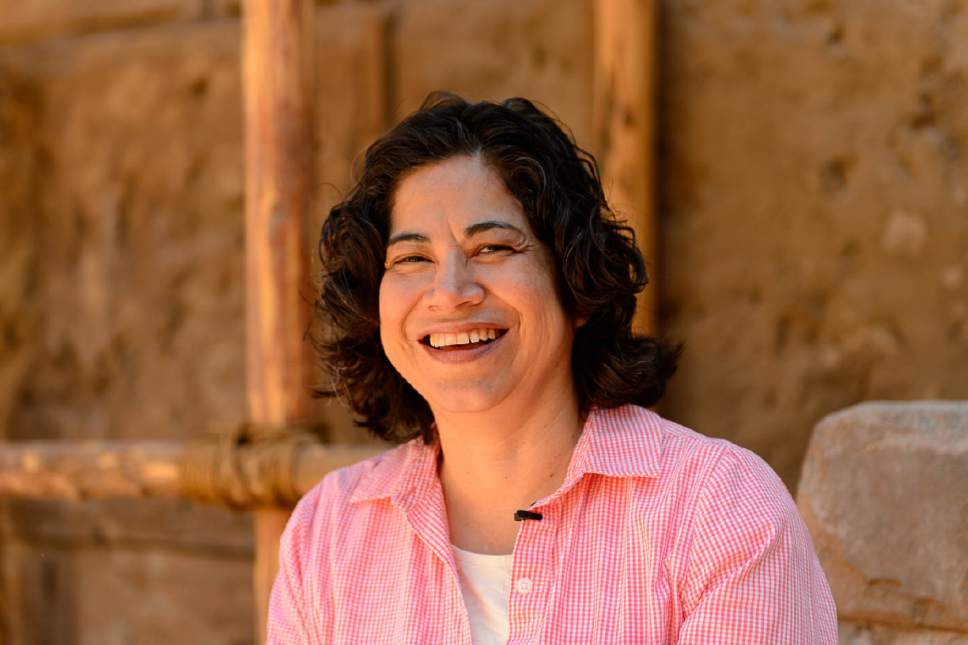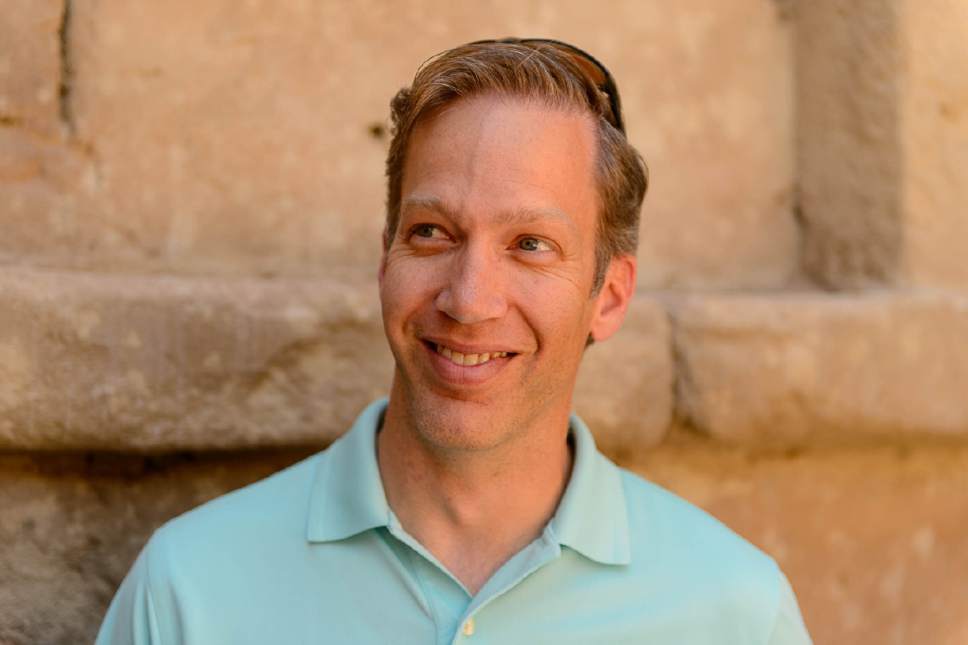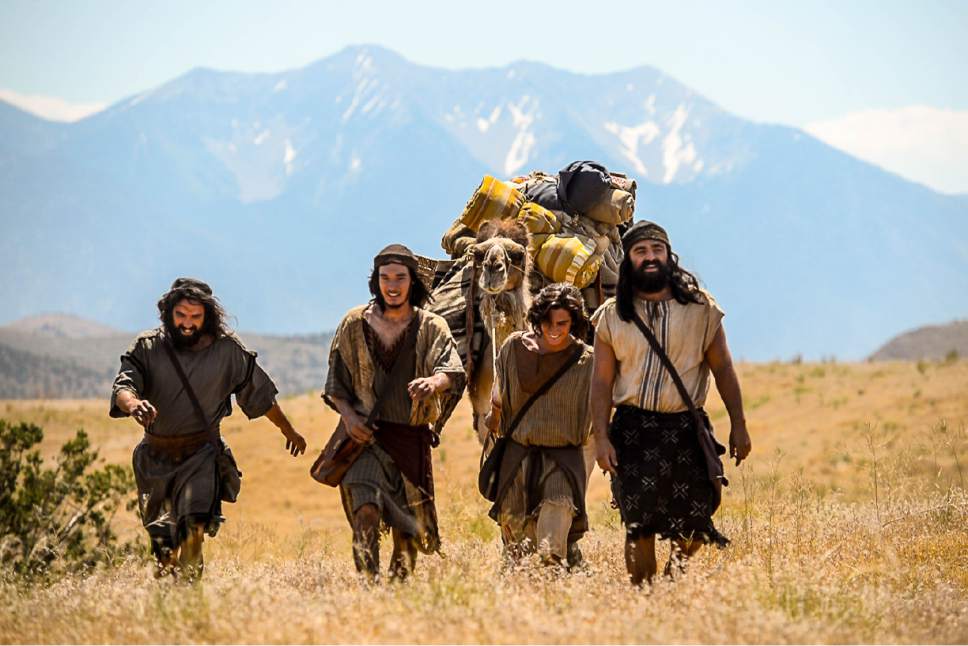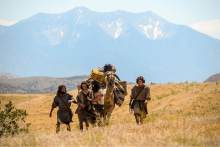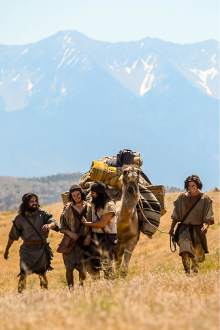This is an archived article that was published on sltrib.com in 2017, and information in the article may be outdated. It is provided only for personal research purposes and may not be reprinted.
Elberta • The four sons of Lehi, clad in desert robes, hike over a rise, smiling and joshing one another in friendly sibling camaraderie.
Their camel, Moses, is being a diva, though.
"Cut!" shouts Christina Torriente-Robey, the director on the set for Friday's filming at the LDS Motion Picture Studios South, two miles southeast of Elberta, on the southwest edge of Utah County.
"Camels are not fun to work with at all," a crew member mutters in mock exasperation as the actors portraying Lehi's sons lead Moses back down the hill for another take.
A movie crew of about 100 was halfway through a 30-day shoot at this remote site Friday, working on the first part of a massive five-year project for The Church of Jesus Christ of Latter-day Saints: The Book of Mormon visual library, shooting representations of scenes from the scripture beloved by millions of LDS faithful worldwide.
The first videos are scheduled for release in fall 2018.
Bill Elliott, the visual library's executive producer, said the aim is to provide a new way for people to access the stories in the Book of Mormon.
"People are visual learners," explained Elliott, who was a production executive at NBC for 23 years before working for the LDS Church. "It's not meant to replace the Book of Mormon. My thought is, if you like the video, go read the book."
The 500-plus-page volume is part of Mormonism's sacred canon. Published in 1830 from writings on gold plates that LDS founder Joseph Smith said he translated, it tells the story of ancient peoples who traveled from the Holy Land to the Americas. In LDS homes, Book of Mormon stories about prophets named Lehi, Nephi and Alma coexist with biblical yarns about Abraham, Noah and Peter.
LeGrand R. Curtis, an LDS general authority in the First Quorum of the Seventy, said the visual library helps fulfill the goal of "strengthening the faith, and one of the best ways to do that is by encouraging members to read the scriptures."
Filming scenes from the Book of Mormon, Curtis said, follows the LDS Church videos of the New Testament, which sought to bring biblical stories to homes and classrooms while inspiring viewers to open the book and "read the words of God."
Curtis led a steering committee within the LDS leadership that oversaw the scriptwriting, which presented its own challenges. "The printed word is not written as dialogue, so you have to create dialogue to go along with the story," he said. "You don't know what people looked like or what the scene looked like. So we would read through the scripts and ask, 'Does that comport with what the scripture says?' "
One directive Mormon leaders gave the filmmakers, Elliott said, was to add as little as possible to what is already in scripture. He cited one scene involving Lehi's sons. "It says, 'The brothers murmured.' Well, what did they say?"
The project, once completed, will re-enact some 60 percent of the Book of Mormon, Elliott said. Some of the major battle scenes would be prohibitively expensive to re-create on film.
These stories will be compiled into episodic form and released on YouTube, said Aaron Merrell, one of the project's producers. Elliott added that the scenes also will form an archive of stock footage for church use — classroom lessons, missionary work or to illustrate sermons at twice-yearly LDS General Conferences.
This summer's 30-day shoot at the Salt Lake City-based faith's Utah County studio, plus five days filming seaside scenes on the Oregon coast, will cover the first 18 chapters of the First Book of Nephi. The crew spent several days shooting in the studio's Jerusalem backlot, constructed for the New Testament series, for scenes of Lehi warning the people of Jerusalem.
Friday's shooting started with Lehi's sons, with their camel, walking toward the home of Ishmael, to gather more supporters and, in Ishmael's daughters, brides for the four brothers.
"There's a lot of expectations," said Torriente-Robey, who has worked as a producer and director for the LDS Church for eight years. "I want to meet the expectations of all the people who have read this book hundreds of times and to be true to the story as much as possible."
It required four takes to get the shot of the brothers and Moses walking — as a crew member held a hot blower under the camera to simulate heat waves rising from the desert. The crew then moved cameras and equipment down a hill to the front of Ishmael's house, which, in a bit of movie fakery, doubles as the back of Lehi's house.
Elliott, watching the brothers and Moses under the midday sun, was moved by the sight.
"You stand out here for a little while, you get a feel for what the filmmakers go through," Elliott said. "You also get an idea of what Lehi and his family went through in the Middle East."
Twitter: @moviecricket


